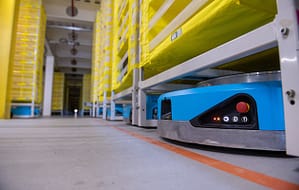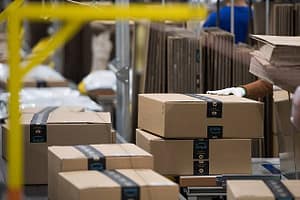The Supply Chain Management (SCM) landscape has changed dramatically over the last two decades. From the rise of eCommerce to the emergence of new technologies such as the internet of things (IoT), the way businesses manage their supply chains has evolved significantly.
There’s now an inflection point where the market will experience a rapid shift from hype to reality. The same applies in the SCM industry. It means that companies must start preparing for the changes ahead.
To succeed, companies need to adopt best practices in these key areas:
1. Switching to automated inventory management
When you look at a company’s inventory management overview, you’ll notice that most of them have a manual process for managing inventory. It includes physical inventories, which are stored in warehouses and depots.
Adopting digital technology to streamline operations is one of the ways to improve inventory management. It allows companies to automate their warehouse operations and reduce costs.
Moreover, inventory management software helps track inventory levels and monitor stock movements. It also provides visibility into what products are available and how much they cost.
It’s important to note that there are different types of inventory management software. Some focus on tracking inventory while others offer more advanced features like order processing, pricing, and forecasting.
Automating inventory management can save time and money. For instance, if you use an online platform to manage your inventory, you don’t need to update stock levels manually. You can simply add items to the system, automatically updating all relevant information. Plus, it ensures that you always know exactly how many units of each item are available.
2. Updating procurement strategies
The demand and the impacts that suppliers have are constantly changing. As a result, procurement strategies should evolve with the times.
Procurement teams often struggle when it comes to sourcing the right suppliers. They may not have the necessary skills to identify the right partners. Or they may lack the resources to conduct due diligence.
However, adopting a data-driven approach can help you make better decisions. Data analytics tools can help you find the right suppliers based on your needs. It can also help you assess the quality of potential partners.
Another method is adopting predictive analytics, which can help predict future trends. It can also help optimise your purchasing strategy. It’s instrumental when it comes to identifying opportunities to increase sales. Predictive analytics can help you forecast demand and determine whether you need to source additional supplies.
3. Enhancing customer experiences and visibility through IoT
As businesses move towards a world where everything is connected, customers expect seamless interactions across channels.
They want to interact with brands through multiple touchpoints. And they expect those touchpoints to be consistent. That’s why ensuring your brand identity remains consistent across all platforms is crucial.
To achieve this, you must adopt technologies that allow you to connect your physical assets (e.g., stores) with your digital presence (e.g., websites). You can do this using IoT devices, a network of physical objects connected through the internet. These devices collect data from various sources and send it back to a central location. The collected data can then be used to analyse patterns and trends.
You can also use IoT to connect different parts of your supply chain. For example, you might want to know where products are located at all times. Furthermore, you can employ IoT to monitor equipment and assets. It includes things like temperature sensors,
Global Positioning System (GPS) units, and Radio-frequency identification (RFID) tags.
4. Optimising transportation networks
Transportation networks play a critical role in ensuring that goods reach consumers at the right time and place. For example, if you ship goods via air freight, you must consider weather conditions, flight delays, and airport congestion. Similarly, if you ship goods using sea carriers, you need to take into account factors such as sea traffic, port capacity, and cargo damage.
By leveraging technology, you can improve the efficiency of these networks. For example, you can automate tasks such as scheduling shipments, tracking delivery status, monitoring carrier performance, and matching shippers with delivery service providers. It will help reduce costs and improve the overall experience for both you and your customers. (2)
Aside from tracking systems, you can also leverage artificial intelligence to optimise transportation networks. Artificial intelligence (AI) can help you detect anomalies in shipping routes and schedule changes. It can even suggest alternative and optimised routes based on real-time market dynamics.
5. Leveraging blockchain to improve supply chain transparency
Blockchain is an open ledger system that allows users to record transactions without intermediaries. It provides a secure way to store information.
Since blockchain is decentralised in nature, it’s ideal for recording transactions. You can use it to track inventory levels, manage payments, and verify compliance.
A new trend in the blockchain is its ability to integrate smart contracts. Smart contracts are self-executing programs that run automatically once certain conditions are met. They can be programmed to perform specific actions upon completion. You can use smart contracts to automate many aspects of the supply chain process. For example, they can be programmed to pay vendors automatically after receiving customer payments.
6. Integrating machine learning to improve operations
Machine learning (ML) uses algorithms to teach computers how to learn. As a result, machines can make predictions about future events. It means that you can train them to identify patterns and predict outcomes.
In the context of supply chains, you can use ML to monitor and analyse data. For example, you could use it to predict demand and plan production accordingly. Or, you could use it for predictive maintenance. Predictive maintenance helps you avoid downtime by identifying potential problems before they occur.
7. Investing in technology for cyber security
Lastly, investing in technology for cybersecurity is important. The cyber threat landscape has drastically changed over the past few years and is continuously evolving. Cybercriminals have become more sophisticated and advanced. They’ve developed tools to steal sensitive data and disrupt online commerce.
As a result, companies must invest in technologies that protect against attacks. These include firewalls, intrusion detection systems, and encryption software. Furthermore, you should ensure that all your devices are up to date with the latest patches and updates.
Some of the best practices in supply chain cyber security include:
- Using multi-factor authentication when logging into corporate accounts.
- Implementing two-step verification whenever possible.
- Maintaining strong passwords.
- Keeping your operating systems updated.
- Monitoring suspicious activity.
Final thoughts
As society moves toward a digital economy, the importance of the supply chain will only increase. Businesses will increasingly rely on technology to drive growth and profitability. By adopting the best practices outlined above, you can position yourself to succeed in this changing environment.
References:
- Gartner, “Gartner Hype Cycle,” Gartner, n.d., https://www.gartner.com/en/research/methodologies/gartner-hype-cycle
- org, “How Artificial Intelligence is Making Transport Safer, Cleaner, More Reliable, and Efficient in Emerging Markets,” IFC.org, November 2019, https://www.ifc.org/wps/wcm/connect/7c21eaf5-7d18-43b7-bce1-864e3e42de2b/EMCompass-Note-75-AI-making-transport-safer-in-Emerging-Markets.pdf?MOD=AJPERES&CVID=mV7VCeN
- IBM, “What are smart contracts on blockchain?” IBM, n.d., https://www.ibm.com/ph-en/topics/smart-contracts
- Erfan Babaee Tirkolaee, et.al., “Application of Machine Learning in Supply Chain Management: A Comprehensive Overview of the Main Areas,” Hindawi, June 22, 2021, https://www.hindawi.com/journals/mpe/2021/1476043/
- Mitul Makadia, “How to Find the Right Machine Learning Techniques for Predictive Maintenance?” Aithority, February 13, 2020, https://aithority.com/guest-authors/how-to-find-the-right-machine-learning-techniques-for-predictive-maintenance/#:~:text=Predictive%20Maintenance%20uses%20Machine%20Learning,predicting%20failure%20before%20they%20happen






Leave a Comment